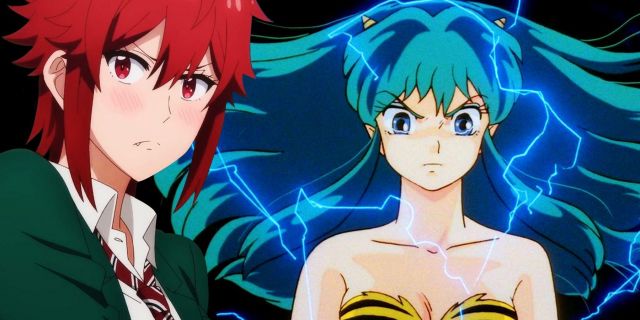In the world of Japanese manga and anime, the community uses many colorful terms and phrases to describe their favorite character archetypes and story themes, including the various -dere types. The most popular and noteworthy archetype is the tsundere, and some anime fans are eager to learn how the tsundere archetype got started.
The tsundere archetype is decades old, and it’s only gotten more popular with characters like Taiga Aisaka, Nami the pirate navigator and Vegeta the Saiyan prince. Now it’s time to see how tsunderes got started as a formally recognized character archetype — and of course, how the tsundere concept has evolved since then.
The First Tsunderes in Manga & Anime
According to some sources, the earliest known tsundere in manga and anime is Heckett from Osamu Tezuka’s famed work Princess Knight, also known as Zenda. In that medieval European-inspired manga, Heckett is Satan’s daughter and appears as a blonde girl in a red outfit, though she also has a white-furred cat form. She is presented as an antagonist at first, similar to her father, but Heckett later revealed her good side to protagonist Saphhire as well, making her a fairly straightforward and clear tsundere in an era where terms like that were not yet used.
Heckett may be considered manga’s first true tsundere, but in anime, Lum the alien oni from Urusei Yatsura takes that prize. She first appeared in the manga when it launched in 1978, and when the anime began airing in 1981, that made Lum the first anime tsundere. The original Urusei Yatsura anime ran for over 100 episodes and had many fans, and now, a new generation of anime fans can meet the industry’s first tsundere in the 2020s reboot version, with updated animated visuals. Interestingly, this makes Lum merely a part of the pack where tsunderes go, and new anime fans probably won’t recognize her as a pioneer of the archetype. Instead, she blends in with all the other characters who have followed in her footsteps, but for older anime fans, that doesn’t make Lum any less special.
The Definition & Evolution of Tsundere Anime Characters
Ever since the early 1980s, when Lum the alien tsundere showed up, this anime character archetype kept growing until it became the surprisingly deep and nuanced thing it is today. The 2000s in particular saw serious growth for the tsundere type, and it was in this era that “tsundere” became accepted as an official term for such characters. The 2010s and 2020s have added plenty more tsunderes as well, many of whom tinkered with the formula while also revealing some of its flaws.
The term “tsundere” combines tsun tsun and dere dere to describe someone who is both harsh and sweet. Most commonly, they are hotheaded, confrontational and defensive in most situations, but a tsundere will open their heart to the right person over time and reveal their softer side when they feel ready. Tsunderes are known to be in constant denial of their amorous feelings, even to the object of their affection, giving rise to generalized lines such as “It’s not like I like you, dummy!” while giving themselves away with serious blushing. Tsunderes might also generally scale back their abrasive, aggressive side as their romantic feelings grow, but not always. Some tsunderes are totally changed by love, while others only show their kind side to that special someone and nobody else.
By tradition, tsunderes tend to be female characters, and the contrast between their sweet, girly side and their tough, scary exterior is highly appealing to many anime fans. Examples are endless, from the petite Taiga Aisaka in Toradora! to Sakura Haruno in Naruto to Kagome Higurashi in Inuyasha, but there has also been a trend of male tsunderes. These boys are broadly similar to their more common female counterparts, except they are less prone to hitting people to vent their anger or acting defensively. In fact, the female tsundere archetype has come under criticism recently for making light of violence, and even recent examples such as Tomo Aizawa in Tomo-chan is a Girl! maintain this trend.
Overall, the tsundere archetype has not changed much since its inception in the 1980s and its heyday in the 2000s, though the anime community may view it somewhat differently, and manga/anime authors are taking note. Male tsunderes have become established as a lovable variation of this archetype, and they may set better examples of how tsunderes can be tough but lovable as hot-headed, defensive lovers. More and more, anime fans are calling out the anime industry for its most harmful or regressive elements, from token shonen girls to excessive fan service and trivializing violence as comedy, and the tsundere archetype is in the middle of all that. Regardless of their gender, a tsundere can be hard on the outside and soft on the inside, all without caving in someone’s skull. That kind of change is long overdue for these hotheaded characters.















Leave a Reply